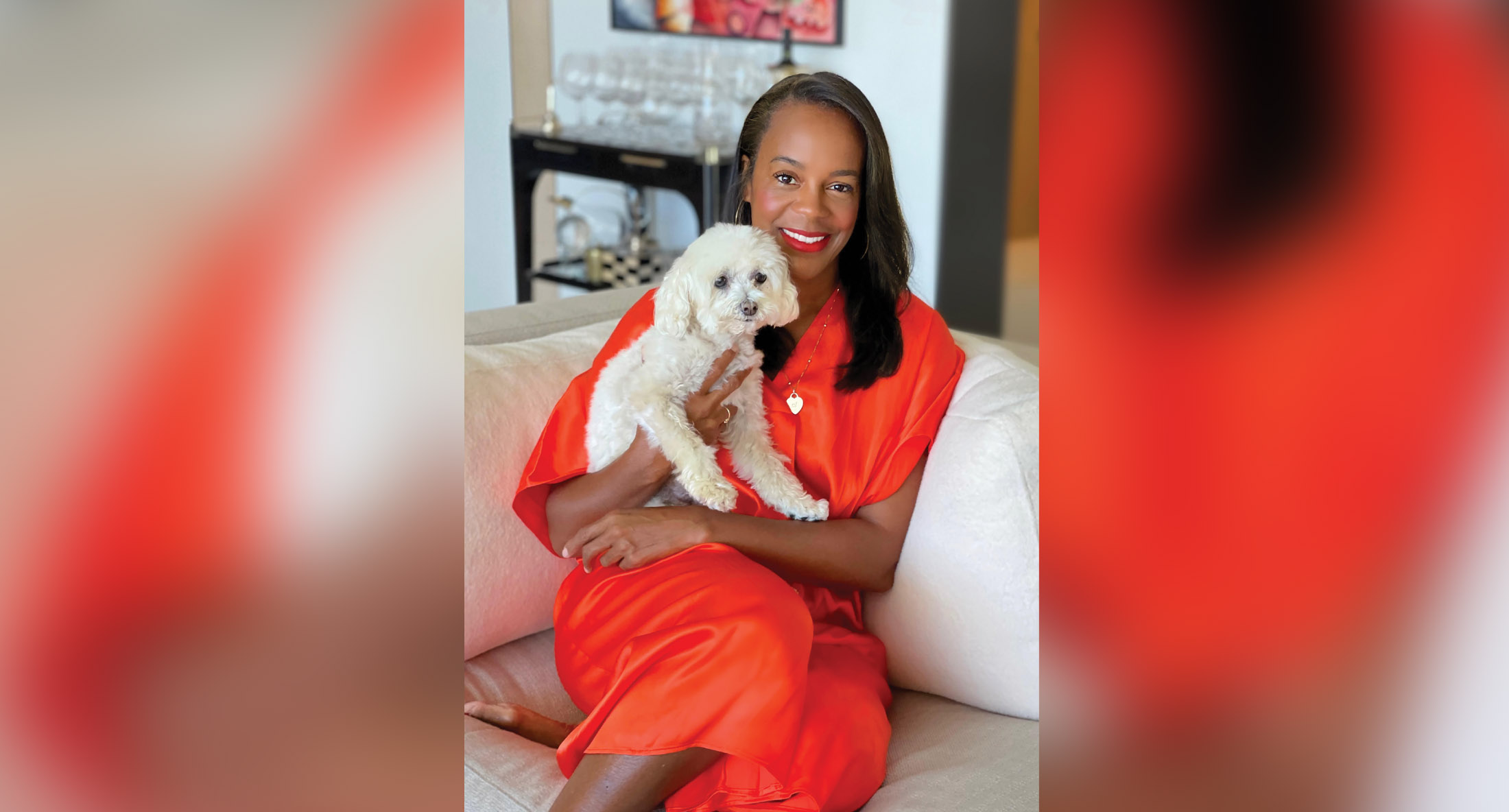YOU DON’T SERVE UP A GREAT STEAK ON A plastic plate. So, when you’re featuring the best of the fashion world in a book, you don’t produce a cheap paperback. Instead, there’s Robert Ector’s Details: City Streets are the Real Runways, which captures Fashion Week highlights from London, Milan, New York and Paris.
A work of art in itself, the 650-page book, with gold foil and its own slipcase, weighs 15 pounds (and costs $400). It captures some of the best work of the photographer and art director still only in his 30s who has been described as “the go-to photographer for fashionistas and celebs.” His client list includes Mary J. Blige (who penned the foreword), Steve Harvey, La La Anthony, Wendy Williams and Toni Braxton, and iconic brands such as Vogue, Dolce & Gabbana, Versace and Fendi.
Great photography isn’t just about composition and lighting, Ector says. It also requires an ability to coax the best out of people. “A lot of photography is psychology,” he says, crediting Derek Blakes, a photographer he worked with when he was starting out, for helping him learn how important a good personality is.
It “can make or break you,” he says. “You have to have your clients feel comfortable around you… just make sure that you give them their space and make them feel comfortable, so they can bring you in and you both can collaborate on a beautiful picture.”
Working closely with celebrities has given Ector an informal schooling on how to be successful in business. “Just being around influential people, you always learn something,” he says. “Every single person I work with, I try to take something and gain from them because they are who they are for a reason.”
From Harvey, with whom he worked for about six years, it was the importance of always reinventing yourself. “He’s really big on that… knowing what’s coming next and knowing how to switch up things. He would always say, ‘Know your ABCs: Always Be Closing,’ which means you should always have some type of project that you’re working on. No matter what, you have always got something in the kitchen cooking.”
Blige showed him that “you don’t have to be amazed or impressed with the limelight. She’s so regular and chill and cool.” Because of her stature she could be demanding, “but she’s not, and that’s why everyone loves her, because she is so easy to get along with.”
‘High quality work’
As he has built his own reputation as an A-list shooter, Ector has also learned what it takes to get ahead in the industry. Talent is important, of course, but he also talks about character because so much work in the fashion world comes by word of mouth.
“You have to make sure that you give high-quality work, that you’re doing everything that you said, because just one bad experience can set off everything, but one good experience can have this person calling you, this person calling you.” He emphasizes good business morals and “just making sure that you don’t do anything that your brand would be embarrassed by.”
Ector was drawn to creativity and style from an early age, growing up in Cleveland, Ohio. His grandfather was a painter and Ector liked to copy him, while his aunt ran one of the biggest hair salons in the city. His mom and sisters introduced him to fashion. “I was always surrounded by beautiful women always taking care of themselves,” he recalls. “Everybody was into fashion and beauty; it was just really in my DNA.”
Ector didn’t realize when he embarked on the Details project that he wasn’t just documenting some of the best of the contemporary fashion world, but possibly also the end of an era. It was “the last four years of Fashion Week as the world will ever know it,” he says. “There was so much access to these people and clothing that we will never have again. You’ll never be able to get [famed Vogue editor] Anna Wintour just walking down the street amongst us and talking with us. There are going to be so many precautions.”
Following the enthusiastic reception for his high-style book, Ector created an exclusive line of luxury greeting cards. The art of handwritten notes may have been lost to many people, but it’s still practiced in the fashion world, he notes. “I realized just how important stationery is in other countries, especially during fashion shows… their invitations are sent on beautiful stationary, there’s a lot of little communication done on it. Just a handwritten little note is very important in the world of high fashion.”
He also remembered how greeting cards were important in his family. So, he came up with an all-occasion box. The 25 stylish, gold foil-stamped cards feature his camera work for birthdays, anniversaries, sympathy and other messages. He hopes the selection (available at his website, robertector. com) might encourage people to appreciate how a personal note can make an impact, because “social media will really take that away from you in texting.”
MY WAYMAKER: ROBERT ECTOR
My mom. She had five children, but she always had her career and she always managed that so beautifully on top of raising us.
‘Next-level’ impact
As a fashion world insider, what’s his advice to someone looking to develop a style for their work and personal life? “Just create your own,” he suggests. “Come up with a look that people associate with you… a look that would just separate you from the rest.”
Appropriately, given the title of his book, he also says pay attention to the details. Those little touches and flourishes may not be obvious at a glance, but they work together to make a striking impression. On a visit to an Italian fashion house, Ector was struck by “how beautiful the detailing was” on the pieces.
“When you’re up close to these items, you can see why a coat could cost $400,000,” he explains. “You know, there’s 10 pairs of diamonds on the jacket bracelets and so many things like that, that you might not see if you just see Rihanna leaving a theater show… but if you’re in person and you get to see these items in the details—the shoes and the clothes, the belts, the fabrics or textures—this is really next level.”
“Come up with a look that people associate with you.”
Looking ahead, Ector is working on another book (the details of which are under wraps), but he doesn’t necessarily want to limit himself to a camera. “I love photography and all aspects of art, but there’s so many other things I want to do as well,” he says—maybe interior design and music. “I like so many different aspects of life… I just want to just continue to be happy, continue to let my art blow into the world and, whatever happens, you know?”
Ector has some advice for his younger, 21-year-old self. “Don’t worry,” he counsels. “Everything will be good. Don’t stress out about college and what’s to come after that. Just know that everything will be good.” He also has words for other young people. “I always tell them, ‘Save, save, save.’ Especially when you’re 21, and you are buying stupid shoes… you know, just little things that you look for when you are younger that don’t matter. Just save your money and you are good.”
PHONE PHOTOGRAPHY 101
Smartphones have made everyone a photographer, so what’s one simple tip a pro like Robert Ector could offer to improve their results?
“The No. 1 thing with the cellphone picture is you have got to make sure that your lens is clear,” he says. “Always wipe your fingerprints. Your phone is in your purse, so before you take that picture make sure you clean it with a good cloth or something.”
This article was originally published in the Spring 2022 issue of WayMaker Journal.
Arts
January 9, 2024


